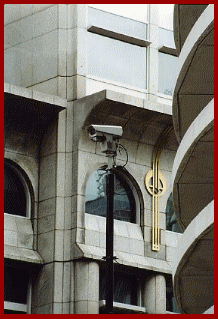| ||||||||||||||||||||||||||||||
Welcome to the | ||||||||||||||||||||||||||||||
 | ||||||||||||||||||||||||||||||
 | ||||||||||||||||||||||||||||||
The complete A to Z ... | ||||||||||||||||||||||||||||||
Co- axial cables can be used for distances well in excess of a thousand metres, although signal 'launch' and 'balancing' equipment will need to be employed to help maintain the overall picture quality. With any co-axial cable there is always the possibility of ‘picking up’ another externally transmitted signal, or 'hum', (always try and avoid running co-ax alongside heavy weight mains cables!) which can be reduced to some degree using launch amplifiers and receivers, but can more simply be minimised by selecting a high quality ‘double screened’ cable. This type has in addition to the normal stranded outer layer (copper braid), an additional highly efficient ‘screen’ layer which can be comprised of a tightly woven braid, or preferably an overall lapping of thin copper foil. Although standard 'BNC' connectors are readily available in both solder, crimp and twist on versions, double screened cable connectors are generally far more difficult to obtain (incidentally, given the choice Doktor Jon would recommend the solder connectors everytime; they may take longer to fit, and require a little bit more skill, but their longterm reliability simply cannot be matched). It's perhaps worth quickly mentioning that only copper braid cables should be used for CCTV, and aluminium braid versions should really be avoided. Ideally depending on the cable run, a braiding which provides at least a 90% coverage should be selected. For specialist applications, or where long cable lengths are to be pulled through complex ducting, steel wire armoured versions are available, or at a more basic level, heavy duty ‘plastic armoured’ cables, with a high density polyethelyne outer layer designed to protect the inner ‘workings’. For cables needing to be taken overhead, best practice suggests that a proper 'catenary' support arrangement should be put in place, to prevent any strain to the coax. Wherever the cable is run, water or moisture must never be allowed to enter the cable, as this will adversely affect its transmission capabilities, and ultimately render it absolutely useless. Although the vast majority of CCTV systems have historically used, and indeed continue to use unbalanced co-axial cable, as the cheapest and most practical for everyday applications, it is not without its limitations. So for longer distance, or multiple signal distribution using copper cable transmission, balanced 'twisted pair cable may provide the answer>. | ||||||||||||||||||||||||||||||
 | ||||||||||||||||||||||||||||||
IMPORTANT: No material may be reproduced, copied or redistributed from this site, © doktorjon.co.uk 2004 - 2008 Homepage...:...Gateway...:...Technical Gateway....:....Quickfind Index....:....Equipment Directory | ||||||||||||||||||||||||||||||

